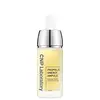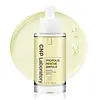What's inside
What's inside
 Key Ingredients
Key Ingredients

 Benefits
Benefits

 Concerns
Concerns

 Ingredients Side-by-side
Ingredients Side-by-side

Water
Skin ConditioningPropolis Extract 10%
Skin ConditioningButylene Glycol
HumectantGlycerin
Humectant1,2-Hexanediol
Skin ConditioningPolysorbate 20
EmulsifyingSophora Flavescens Extract
Skin ConditioningImperata Cylindrica Root Extract
Skin ConditioningPropanediol
SolventHydroxyethylcellulose
Emulsion StabilisingCarbomer
Emulsion StabilisingArginine
MaskingMadecassoside
AntioxidantAllantoin
Skin ConditioningCodonopsis Lanceolata Root Extract
Skin ConditioningMelissa Officinalis Leaf Extract
Skin ConditioningFicus Carica Fruit Extract
HumectantPunica Granatum Extract
AstringentPEG-8
HumectantPentylene Glycol
Skin ConditioningSodium Hyaluronate
HumectantPelargonium Graveolens Flower Oil
MaskingBeta-Glucan
Skin ConditioningSodium Citrate
BufferingHydroxyphenyl Propamidobenzoic Acid
Skin ConditioningEthylhexylglycerin
Skin ConditioningHoney Extract
HumectantSodium Lactate
BufferingPotassium Sorbate
PreservativeCitric Acid
BufferingAscorbyl Palmitate
AntioxidantBiotin
AntiseborrhoeicPalmitoyl Tripeptide-1
Skin ConditioningPalmitoyl Tetrapeptide-7
Skin ConditioningDisodium EDTA
Water, Propolis Extract 10%, Butylene Glycol, Glycerin, 1,2-Hexanediol, Polysorbate 20, Sophora Flavescens Extract, Imperata Cylindrica Root Extract, Propanediol, Hydroxyethylcellulose, Carbomer, Arginine, Madecassoside, Allantoin, Codonopsis Lanceolata Root Extract, Melissa Officinalis Leaf Extract, Ficus Carica Fruit Extract, Punica Granatum Extract, PEG-8, Pentylene Glycol, Sodium Hyaluronate, Pelargonium Graveolens Flower Oil, Beta-Glucan, Sodium Citrate, Hydroxyphenyl Propamidobenzoic Acid, Ethylhexylglycerin, Honey Extract, Sodium Lactate, Potassium Sorbate, Citric Acid, Ascorbyl Palmitate, Biotin, Palmitoyl Tripeptide-1, Palmitoyl Tetrapeptide-7, Disodium EDTA
Water
Skin ConditioningButylene Glycol
Humectant2,3-Butanediol
HumectantMethylpropanediol
SolventNiacinamide
SmoothingPanthenol
Skin Conditioning1,2-Hexanediol
Skin ConditioningBetaine
HumectantTrehalose
HumectantGlycerin
HumectantCynanchum Atratum Extract
Skin ConditioningSarcosine
Skin ConditioningLactobacillus/Soybean Ferment Extract
Skin ConditioningPolyglyceryl-10 Stearate
Skin ConditioningAllantoin
Skin ConditioningPolyacrylate Crosspolymer-6
Emulsion StabilisingPropolis Extract
Skin ConditioningTroxerutin
Skin ConditioningXanthan Gum
EmulsifyingPentylene Glycol
Skin ConditioningYeast
Skin ConditioningPolyglyceryl-10 Oleate
Skin ConditioningDimethicone
EmollientArginine
MaskingSodium Hyaluronate
HumectantCitric Acid
BufferingDipropylene Glycol
HumectantSerine
MaskingCarnitine
CleansingArginine/Lysine Polypeptide
Skin ConditioningTrisodium EDTA
Hydrogenated Lecithin
EmulsifyingLilium Speciosum Flower Oil
MaskingPolyglutamic Acid
Skin ConditioningSalicylic Acid
MaskingSodium Citrate
BufferingHydroxyphenyl Propamidobenzoic Acid
Skin ConditioningSuccinic Acid
BufferingGlutamic Acid
HumectantChlorogenic Acids
AntioxidantAscorbyl Palmitate
AntioxidantCoptis Japonica Root Extract
Skin ConditioningHouttuynia Cordata Extract
Skin ConditioningSorbic Acid
PreservativeGinkgo Biloba Leaf Extract
Skin ConditioningMadecassoside
AntioxidantCitronellol
PerfumingGeraniol
PerfumingLinalool
PerfumingWater, Butylene Glycol, 2,3-Butanediol, Methylpropanediol, Niacinamide, Panthenol, 1,2-Hexanediol, Betaine, Trehalose, Glycerin, Cynanchum Atratum Extract, Sarcosine, Lactobacillus/Soybean Ferment Extract, Polyglyceryl-10 Stearate, Allantoin, Polyacrylate Crosspolymer-6, Propolis Extract, Troxerutin, Xanthan Gum, Pentylene Glycol, Yeast, Polyglyceryl-10 Oleate, Dimethicone, Arginine, Sodium Hyaluronate, Citric Acid, Dipropylene Glycol, Serine, Carnitine, Arginine/Lysine Polypeptide, Trisodium EDTA, Hydrogenated Lecithin, Lilium Speciosum Flower Oil, Polyglutamic Acid, Salicylic Acid, Sodium Citrate, Hydroxyphenyl Propamidobenzoic Acid, Succinic Acid, Glutamic Acid, Chlorogenic Acids, Ascorbyl Palmitate, Coptis Japonica Root Extract, Houttuynia Cordata Extract, Sorbic Acid, Ginkgo Biloba Leaf Extract, Madecassoside, Citronellol, Geraniol, Linalool
 Reviews
Reviews

Ingredients Explained
These ingredients are found in both products.
Ingredients higher up in an ingredient list are typically present in a larger amount.
1,2-Hexanediol is a synthetic liquid and another multi-functional powerhouse.
It is a:
- Humectant, drawing moisture into the skin
- Emollient, helping to soften skin
- Solvent, dispersing and stabilizing formulas
- Preservative booster, enhancing the antimicrobial activity of other preservatives
Allantoin is a soothing ingredient known for its protective and moisturizingg properties. Because of this, it is often added to products with strong active ingredients.
Studies show higher concentrations of this ingredient can promote wound healing.
Though it can be derived from the comfrey plant, allantoin is produced synthetically for cosmetic products to ensure purity.
Learn more about AllantoinArginine is an amino acid that is important for human development. Your body uses is it to produce hair keratin and skin collagen.
As a cosmetic ingredient, Arginine has antioxidant properties and can also help repair damaged skin. This ingredient is derived either synthetically or from animals.
Arginine isn't fungal acne safe when used in the presence of other lipids (fats, fatty acids, oils, esters, etc). Oils and fats occur naturally within the skin, so take caution when using Arginine if you're prone to fungal acne.
Learn more about ArginineAscorbyl Palmitate is created by combining pure Vitamin C and palmitic acid. It is an antioxidant and helps reduce hyperpigmentation.
This ingredient is a more stable version of Vitamin C, meaning it does not disintegrate as quickly when exposed to sunlight. However, studies show it does not penetrate skin as well as pure Vitamin C.
Ascorbyl Palmitate is oil soluble.
Read more about other types of Vitamin C:
Learn more about Ascorbyl PalmitateButylene Glycol (or BG) is used within cosmetic products for a few different reasons:
Overall, Butylene Glycol is a safe and well-rounded ingredient that works well with other ingredients.
Though this ingredient works well with most skin types, some people with sensitive skin may experience a reaction such as allergic rashes, closed comedones, or itchiness.
Learn more about Butylene GlycolCitric Acid is an alpha hydroxy acid (AHA) naturally found in citrus fruits like oranges, lemons, and limes.
Like other AHAs, citric acid can exfoliate skin by breaking down the bonds that hold dead skin cells together. This helps reveal smoother and brighter skin underneath.
However, this exfoliating effect only happens at high concentrations (20%) which can be hard to find in cosmetic products.
Due to this, citric acid is usually included in small amounts as a pH adjuster. This helps keep products slightly more acidic and compatible with skin's natural pH.
In skincare formulas, citric acid can:
While it can provide some skin benefits, research shows lactic acid and glycolic acid are generally more effective and less irritating exfoliants.
Most citric acid used in skincare today is made by fermenting sugars (usually from molasses). This synthetic version is identical to the natural citrus form but easier to stabilize and use in formulations.
Read more about some other popular AHA's here:
Learn more about Citric AcidGlycerin is already naturally found in your skin. It helps moisturize and protect your skin.
A study from 2016 found glycerin to be more effective as a humectant than AHAs and hyaluronic acid.
As a humectant, it helps the skin stay hydrated by pulling moisture to your skin. The low molecular weight of glycerin allows it to pull moisture into the deeper layers of your skin.
Hydrated skin improves your skin barrier; Your skin barrier helps protect against irritants and bacteria.
Glycerin has also been found to have antimicrobial and antiviral properties. Due to these properties, glycerin is often used in wound and burn treatments.
In cosmetics, glycerin is usually derived from plants such as soybean or palm. However, it can also be sourced from animals, such as tallow or animal fat.
This ingredient is organic, colorless, odorless, and non-toxic.
Glycerin is the name for this ingredient in American English. British English uses Glycerol/Glycerine.
Learn more about GlycerinWe don't have a description for Hydroxyphenyl Propamidobenzoic Acid yet.
Madecassoside comes from the super popular skin-soothing ingredient, Centella asiatica. It is one of four active compounds found in the extract of Centella Asiatica.
Madecassoside has antioxidant, anti-inflammatory, and hydrating properties. It contains fatty acids, amino acids, beta-carotene, and phytochemicals.
One study found using Madecassoside with ascorbic acid helped reduce the signs of aging and improved skin hydration.
Learn more about MadecassosidePentylene glycol is typically used within a product to thicken it. It also adds a smooth, soft, and moisturizing feel to the product. It is naturally found in plants such as sugar beets.
The hydrophilic trait of Pentylene Glycol makes it a humectant. As a humectant, Pentylene Glycol helps draw moisture from the air to your skin. This can help keep your skin hydrated.
This property also makes Pentylene Glycol a great texture enhancer. It can also help thicken or stabilize a product.
Pentylene Glycol also acts as a mild preservative and helps to keep a product microbe-free.
Some people may experience mild eye and skin irritation from Pentylene Glycol. We always recommend speaking with a professional about using this ingredient in your routine.
Pentylene Glycol has a low molecular weight and is part of the 1,2-glycol family.
Learn more about Pentylene GlycolPropolis Extract is also known as bee glue.
This ingredient has antimicrobial, anti-inflammatory, wound healing, and antioxidant properties.
Studies show propolis helps fight against bacteria, viruses, and fungi. This may help with reducing acne and accelerate wound healing.
The flavonoids found in propolis extract are potent antioxidants. Antioxidants may help with reducing the signs of aging.
A study from 2020 found propolis to help reverse skin damage from UV.
Fun facts: This ingredient is created by mixing beeswax, bee saliva, and parts of trees. Bees use propolis as a sealant to close any gaps in their hives.
Since it is an animal-derived product, this ingredient is not considered vegan. For vegan alternatives, check out Galactomyces Ferment Filtrate or Centella Asiatica Extract.
Learn more about Propolis ExtractSodium Citrate is the sodium salts of citric acid. In skincare, it is used to alter pH levels and acts as a preservative.
Its main functions are to maintain the pH of a product and neutralize metal ions.
The acidity of our skin is maintained by our glands and skin biome; normal pH level of skin is slightly acidic (~4.75-5.5).
Being slightly acidic allows our skin to create an "acid mantle". This acid mantle is a thin barrier that protects our skin from bacteria and contaminants.
Learn more about Sodium CitrateSodium Hyaluronate is hyaluronic acid's salt form. It is commonly derived from the sodium salt of hyaluronic acid.
Like hyaluronic acid, it is great at holding water and acts as a humectant. This makes it a great skin hydrating ingredient.
Sodium Hyaluronate is naturally occurring in our bodies and is mostly found in eye fluid and joints.
These are some other common types of Hyaluronic Acid:
Learn more about Sodium HyaluronateWater. It's the most common cosmetic ingredient of all. You'll usually see it at the top of ingredient lists, meaning that it makes up the largest part of the product.
So why is it so popular? Water most often acts as a solvent - this means that it helps dissolve other ingredients into the formulation.
You'll also recognize water as that liquid we all need to stay alive. If you see this, drink a glass of water. Stay hydrated!
Learn more about Water